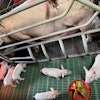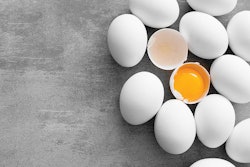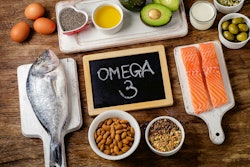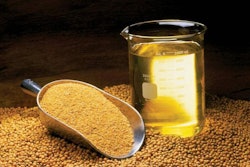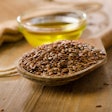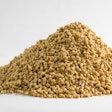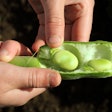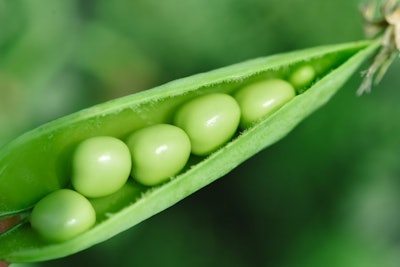
Pea seeds for poultry feeding are becoming increasingly available as new varieties low in anti-nutritional factors allow for higher inclusion levels.
According to the 2018 Soybean Meal Demand Assessment prepared for the United Soybean Board, 31.2 million tons of soybean meal was fed to animals worldwide during the 2016-17 marketing year. Out of this tonnage, broilers consumed the most (48%); almost half of it.
Thus, broiler producers pressed by soybean meal cost or availability are the most relevant candidates to assess protein replacements, such as pea seeds. Pea seeds can be fed even raw under certain circumstances, and this is why they remain high in the interest of feed producers.
Pea seeds as a crop
Pea seeds are the fruits of the annual plant Pisum sativus. There are many available varieties distinguished by the color of the flower petals (white or yellow), the color of the seeds (yellow, green or brown), the appearance of the seed (smooth or wrinkled), and the season of planting (winter or spring). They are widely cultivated in areas that are rather cold, and thus less suitable for soybeans, such as in northern U.S., Canada and northern Europe. Naturally, they produce less nutrients per hectare than soybeans, but there are few alternatives in the environmental conditions in which peas thrive.
Nutritive value
Pea seeds contain about the same amount of energy as barley (2,900 kcal AMEn for broilers), and vary considerably in crude protein (20% to 26%) as a result of growing conditions and variety. Pea seeds are limiting in methionine, which can be increased if crops are fortified with sulfur fertilizers. On the other hand, lysine concentration appears to be fixed and is not affected by protein concentration. Pea seeds contain a significant amount of non-protein nitrogen that is usually not taken into account. Protein digestibility varies considerably, with brown seeded varieties being the least digestible. Fiber levels are moderate, ranging from less than 5% up to 10%, again depending on variety (pea seed fiber can be a benefit in the post-antibiotic era as a means of controlling gut health). Finally, pea seeds are a good source of potassium and selenium.
Anti-nutritional factors
Raw pea seeds contain more or less the same type of anti-nutritional factors as soybeans, but at a much reduced concentration. Trypsin inhibitor activity is the main anti-nutritional factor, but its levels appear rather low in winter, white flowered, and yellow- or green-seeded varieties. In general, winter varieties and those of more color (in flower and seed) appear to contain more anti-nutritional factors, but this is an oversimplification. As a rule of thumb, feeding raw pea seeds will most likely lead to reduced efficiency of energy and protein in broilers if pea seeds come from certain “heavy” varieties and are fed at relatively high levels. In other cases, pea seeds from improved varieties can be fed with greater liberty without major repercussions.
Processing improves nutritive value
The greatest improvement in energy utilization comes from fine grinding, as opposed to feeding pea seeds whole or cracked. This is probably the effect of digestive enzymes gaining greater access to starch within exposed cells.
Heat treatment (such as extrusion, and even pelleting) appears to mostly improve protein digestibility as anti-nutritional factors are neutralized. As it happens, pea proteins are quite sensitive to overheating, which leads to significant protein denaturation and reduced digestibility. Thus, feeding ground raw varieties with reduced levels of anti-nutritional factors is preferred when proper heat treatment methods cannot be applied.
Inclusion rates in broiler feeds
Pea seeds of the best varieties can be used up to 40% in broiler diets without heat treatment. Of course, results can be disappointing if pea seeds are not characterized correctly, and thus, a maximum level of 20% is more reasonable as a generic rule of thumb. Properly heat-processed pea seeds can be fed also rather liberally, but again, if they have been overheated, performance may suffer. There are some more recent reports indicating that adding certain enzymes may improve performance results, but data are rather inconclusive. Perhaps, the greatest impediment with pea seeds remains the great variability between available varieties.

